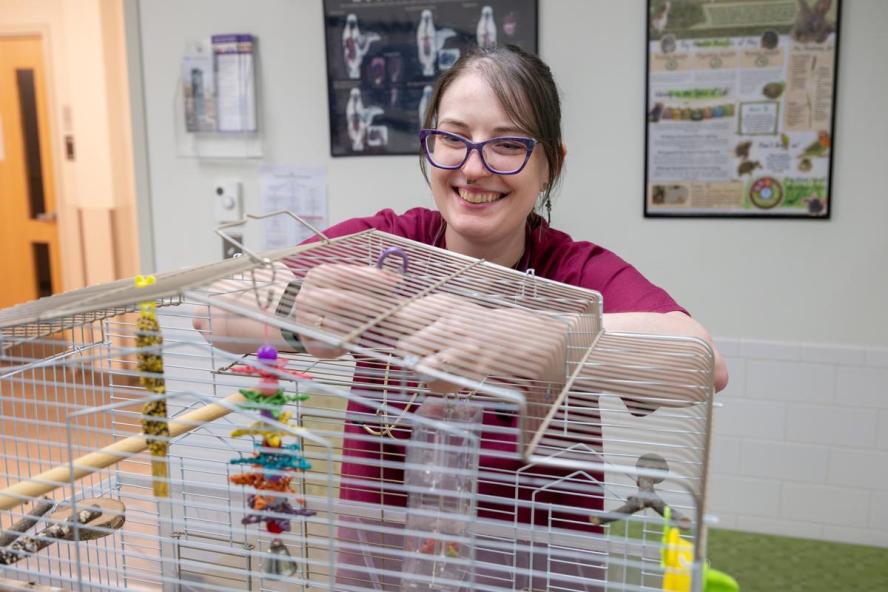-
About
- Leadership & Faculty
- News & Events
-
Academics
- Graduate
- Advanced Clinical Training
- Continuing Education
- Academic Departments
- Academic Offices
- Simulation Experiences
-
Student Life
- Offices
-
Research
-
Hospitals & Clinics
- Emergency Care
- Hospital Services
-
Community Outreach
- Volunteer
Polly Wanna Forage?
Ask the Expert

Feeding your Bird
All species of pet birds have different diet requirements. Generally, a high-quality pellet diet is recommended, but some smaller species still need seeds. There are many good resources online with information on your specific bird and what kinds of foods it thrives on.
What is foraging?
Wild birds spend most of their day searching out and working for food. They fly over a large area in their natural environment, gathering food, cracking nuts and seeds, and evading predators. Our pets are lucky they don’t need to worry about whether they will survive the day, but they are still hard-wired to act on those instincts. Just like cats need to scratch and hunt and dogs need to run and chew, birds need to forage. This means most of their diet should be spread out in multiple locations in their environment and even hidden in puzzles and toys if you have smarty pants.
Foraging vs. Enrichment
Enrichment is important for all animals and helps them stay mentally and physically active. Anything that encourages play, exercise, and learning is enrichment. Foraging, however, is a psychological need for birds. This is a subtle but important distinction. A parrot with many perches and toys will still be under stimulated if fed solely from a single bowl. No amount of training and playtime can replace the basic instinct to find their food. You may have seen (or lived with) a “feather-plucker” and wondered how they could still be bored when they have all the space and toys they want. Foraging may be the answer when all other health concerns are ruled out.
How to Recreate Foraging at Home
- Start small. Although the drive to forage is instinctual, the ability to search and problem-solve must be learned. Begin with several small bowls in the cage or room at varying heights and gradually advance from there.
- Add challenges according to your own bird’s demonstrated ability and natural habitat. For instance, a budgie or cockatiel will likely have trouble with a large puzzle toy. Likewise, a paper ball is way too easy for most macaws.Monitor how your bird is doing with a new challenge to ensure they eventually get to eat.
- Homemade foraging is simple and fun. Just hide their regular food in things like cardboard tubes, folded or crumpled paper, and boxes. Fancy puzzle toys are also available at many pet stores; just be sure they are non-toxic.
- Once your bird learns to forage, it should get most of its food from daily foraging, which will help it feel empowered and fulfilled.
Amanda Hedge, CVT, FFCP (she/her) is a certified veterinary technician II in the Zoological Companion Animal Service at Cummings School of Veterinary Medicine at Tufts University.